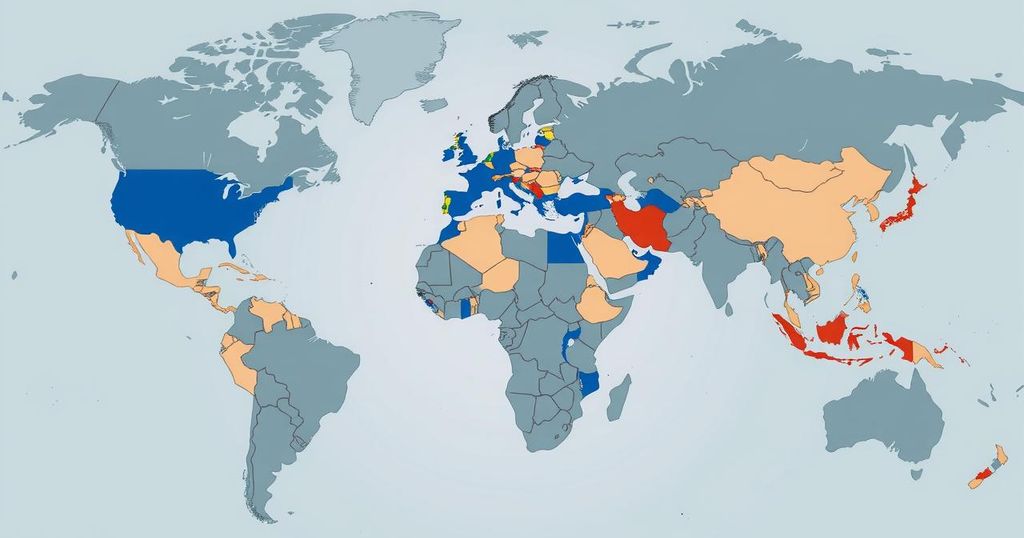The Trump administration is considering a broader travel ban affecting citizens from 43 countries. A draft proposes a ‘red’ list barring entry for 11 specific countries, while an ‘orange’ list imposes travel restrictions on another 10 countries. Ongoing evaluations by officials may lead to further changes before the proposal is finalized.
The Trump administration is contemplating a new travel ban that could affect citizens from 43 countries, significantly expanding past restrictions. A draft circulated within the administration outlines three tiers of countries for potential travel limitations to the United States, as indicated by officials with knowledge of the discussions.
The proposed restrictions categorize countries into a ‘red’ list featuring 11 nations whose citizens would be outright prohibited from entering the United States. This list includes Afghanistan, Bhutan, Cuba, Iran, Libya, North Korea, Somalia, Sudan, Syria, Venezuela, and Yemen. These deliberations are still ongoing, and officials anticipate modifications before the proposal reaches the White House.
Ambassadors and regional bureau officials at the State Department, alongside security personnel from various departments and intelligence agencies, are currently assessing the draft recommendations. Their evaluations focus on the accuracy of claims concerning deficiencies in the listed countries, as well as the potential policy implications of excluding certain nations, especially in the context of maintaining vital international cooperation.
Additionally, the draft features an ‘orange’ list comprising 10 countries where travel would be restricted but not entirely barred. In this category, affluent business travelers might still gain entry, unlike individuals seeking immigrant or tourist visas. The administration continues to seek feedback on these proposals as it formulates a comprehensive approach to travel security.
In summary, the Trump administration’s proposed travel ban could impact citizens of 43 different nations, with a focus on safety and security issues. The categorization of countries aims to facilitate a clearer and more structured approach to immigration policy. The deliberative process involving multiple agencies underscores the complexity of implementing such measures and the necessity for accurate assessments of each country’s status.
Original Source: www.nytimes.com






